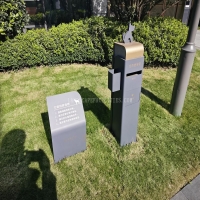Welcome to the website for landscape facilities products and knowledge.
What are the noise reduction techniques used in landscape bar counters for busy outdoor environments?
In bustling outdoor environments, landscape bar counters face significant acoustic challenges that can impact guest experience and operational efficiency. Implementing effective noise reduction techniques requires a multi-faceted approach that combines architectural design, material selection, and technological solutions.
Acoustic barriers represent one of the most effective primary defenses against environmental noise. These can include strategically placed living walls featuring dense vegetation that naturally absorbs sound waves, or specially designed architectural screens made from sound-absorbing composites. The placement and height of these barriers should be calculated based on specific noise source locations and frequency patterns.
Material selection plays a crucial role in noise mitigation. Incorporating sound-absorbing materials into bar counter construction, such as acoustic panels disguised as decorative elements or specialized sound-dampening composites for counter surfaces, can significantly reduce noise reflection. Porous natural stones, acoustic woods, and specialized composites offer both aesthetic appeal and functional noise reduction.
Strategic spatial design contributes substantially to noise control. Creating graduated zoning areas that distance seating from the busiest service points allows for natural noise dissipation. Incorporating varied ceiling heights, canopy structures, and overhead baffles helps break up sound waves while providing weather protection. The strategic placement of water features can also generate masking sounds that cover undesirable noise frequencies.
Advanced technological solutions include integrated sound masking systems that emit specifically tuned background noise to reduce the intelligibility of disruptive sounds. Directional speakers can create localized sound zones, allowing music or entertainment to be contained within specific areas without contributing to overall noise pollution.
Landscaping elements serve dual purposes in noise reduction. Dense planting arrangements using broad-leaf evergreens and multi-layered vegetation provide natural sound absorption while enhancing the aesthetic environment. Earth berms and graded landscaping can act as natural sound barriers when strategically positioned between noise sources and seating areas.
Operational considerations include implementing noise-reducing protocols during peak hours, such as using rubberized glass collection bins, quiet service equipment, and training staff on noise-conscious service techniques. The selection of furniture and accessories also matters—choosing materials and designs that minimize noise generation during use.
By implementing these comprehensive noise reduction techniques, landscape bar operators can create enjoyable outdoor environments that maintain social vitality while reducing acoustic stress. The most successful implementations typically combine several approaches tailored to the specific environmental conditions and operational requirements of each venue, resulting in spaces that offer both atmospheric appeal and acoustic comfort.
Related search:

Recommendation
Outdoor cat and dog feces trash can; Community pet trash can; Metal multi-color design